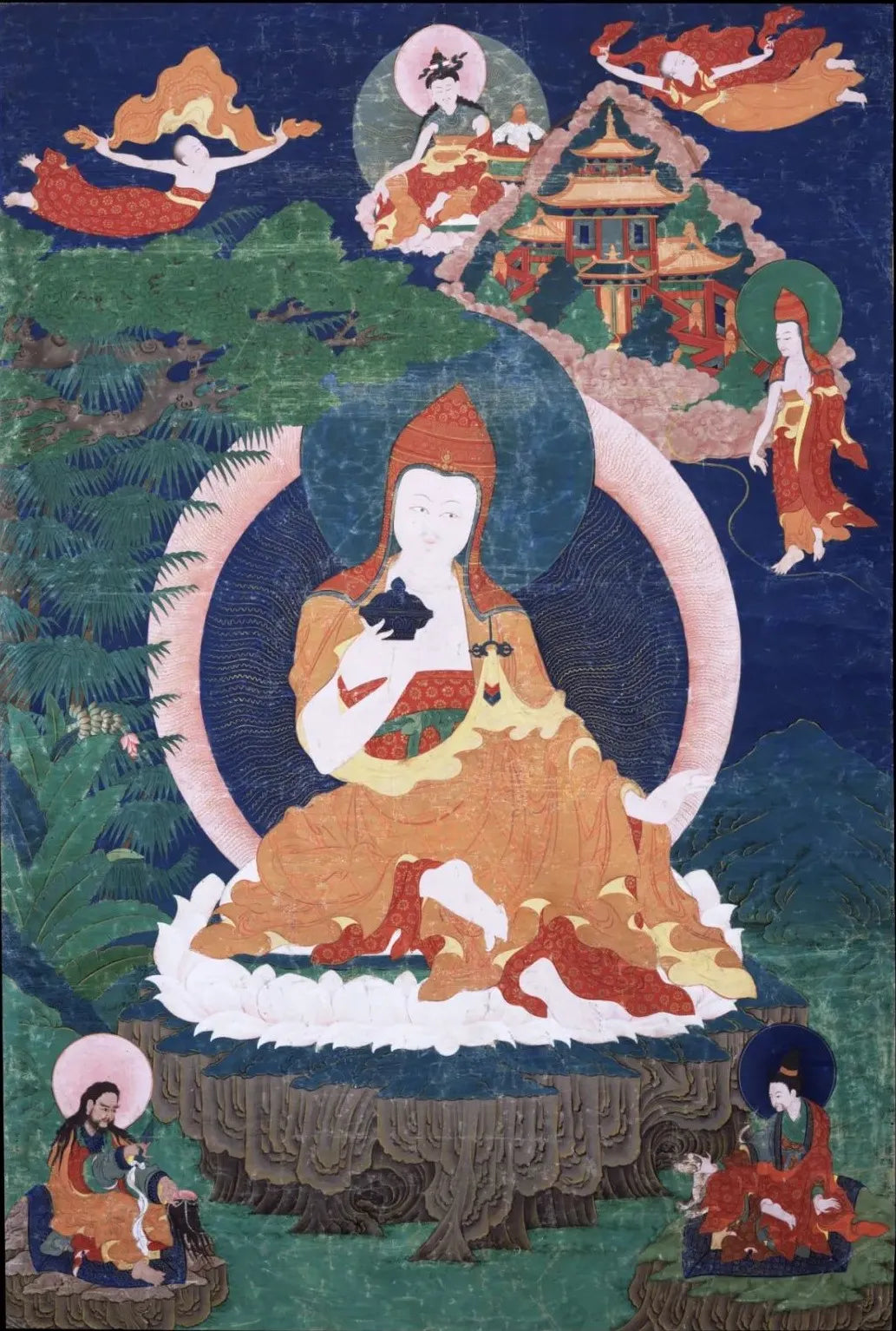
Gentle Wanderer: Cloud in Himalayan Iconography
सप्रत्यग्रै: कुटजकुसुमै: कल्पितार्घायतस्मै
प्रीत: प्रीतिप्रमुखवचनंस्वागतंव्याजहार।।
ཀུན་དའི་ཟླ་ཡི་ཆུ་སྐྱེས་འཛུམ་པ་རྣམས་ཀྱིས་དེ་ལ་མཆོད་པའི་ཆེད་དུ་དགའ་བྱེད་བཞིན།
མཛའ་བ་མངོན་དུ་གྱུར་པའི་ཚིད་ནི་དེ་ལ་ལེགས་པར་འོངས་སམ་དགའ་བ་བརྗོད་པ་བཞིན།
And greets the arrival of clouds with sweet words
- "Meghaduta" (Cloud Messenger)
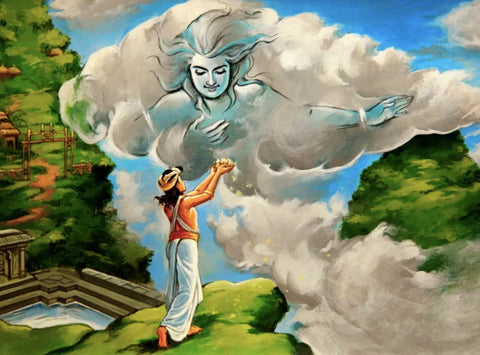
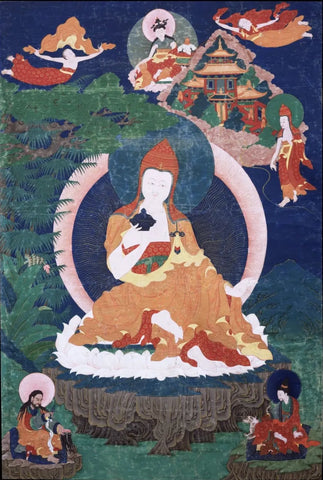
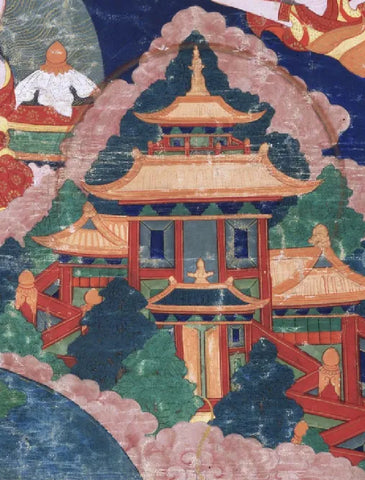
surrounding the bronze mountain palace of the Lotus Born Master.
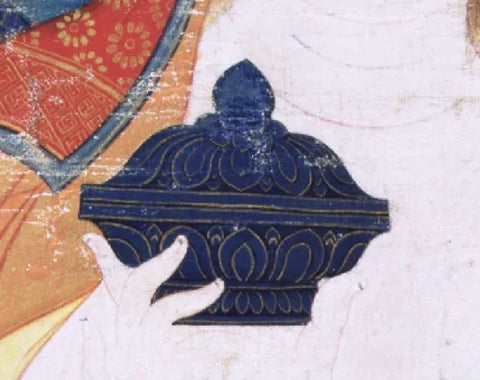
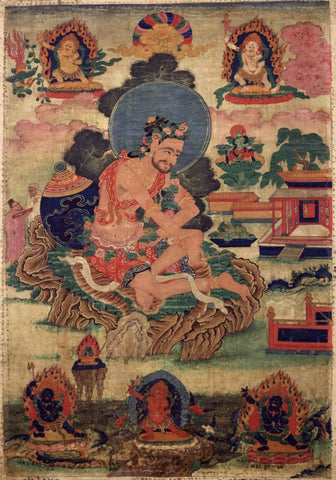
Avadhutipa (ཨ་ཝ་དྷཱུ་ཏི་པ་)
is the lineage master of the Sakya tradition's Dzogchen teachings
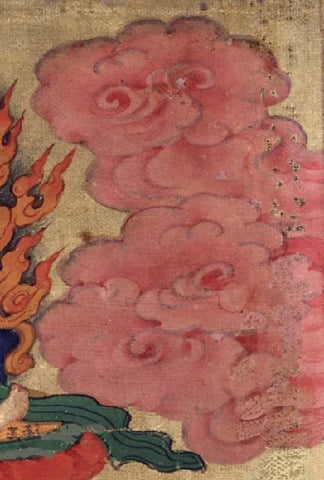
Clouds that symbolize the teachings of Dharma are often believed to foreshadow the arrival of rain and hail, such as red clouds (སྤྲིན་དམར་) or rain clouds (ཆར་སྤྲིན་).
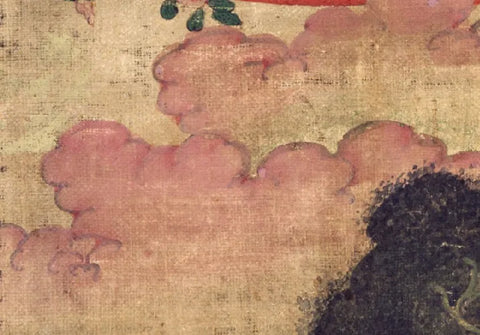
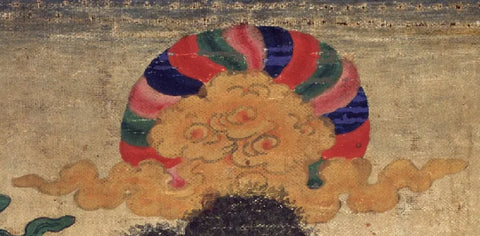
Symbolizing Vajrapani, the golden-yellow clouds
The golden-yellow clouds are often associated with the principal deity
And yellow and brown clouds are also styles of clouds that obscure the sun
"The principal deity is like the sun"
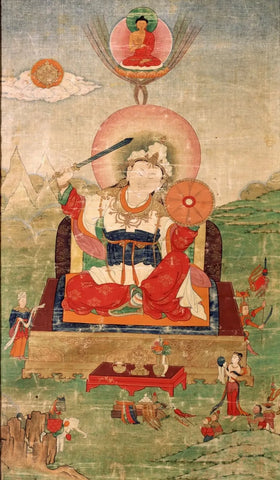
Jamgon Lhawang Dorje
The line of kings in Shambhala Kingdom is divided into:
"Seven Dharma Kings" and "Twenty-five Dharma King heirs"
They are the protectors of the Kalachakra lineage.
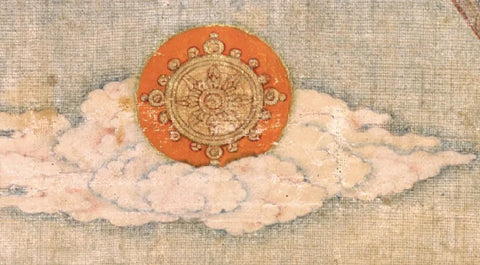
White Cloud represents clear skies without rain.
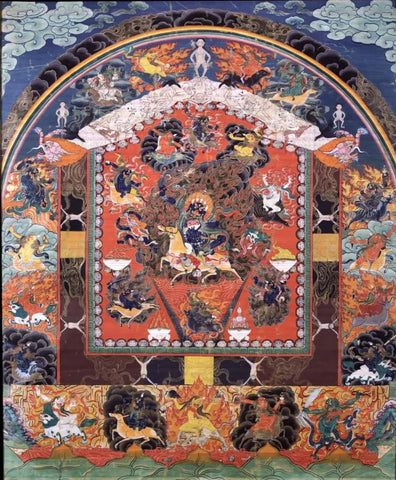
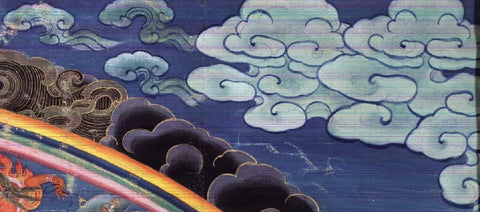
The flames and clouds create a terrifying space together.

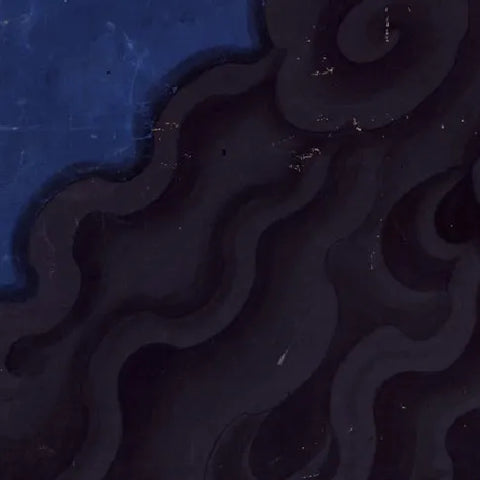
Mixed with thick fog and not dispersing
The cloud clusters here not only gather clouds, snow, wind, and thunder
But also indicate the anger of the gods
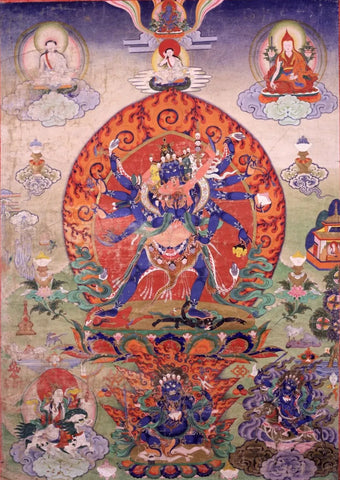
This work is derived from the Dege Mausoleum's Chize tradition.
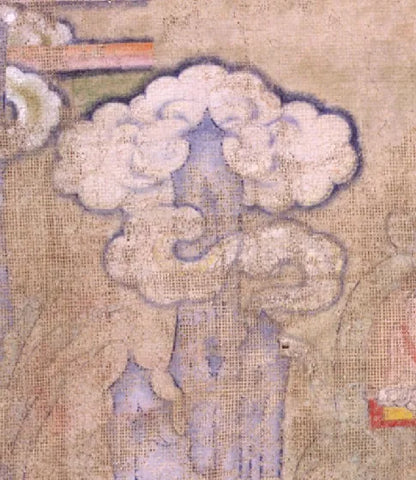
Also known as "cloudscapes" (སྤྲིན་ལྗོངས་)and "cloud mountains"
(སྤྲིན་རི་)
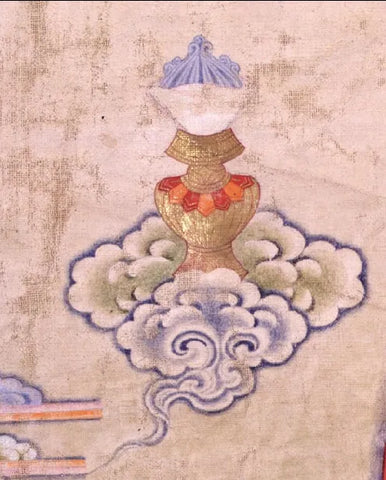

The cloud screen (སྤྲིན་ཁེབ་)located on the central axis of the image depicts a lineage. The vertically arranged cloud screens show the relationship of inheritance. The bottom of the cloud screen is composed of a linear composition.
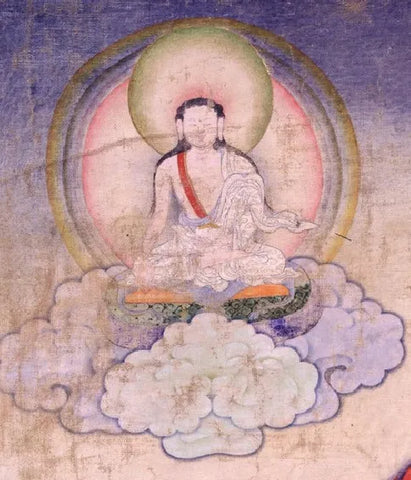

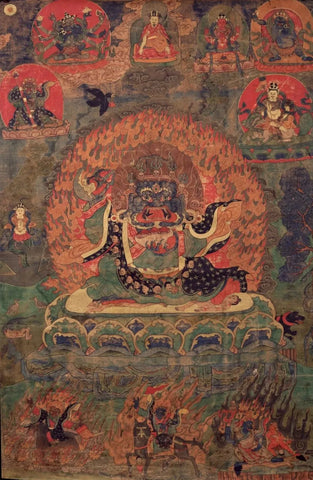
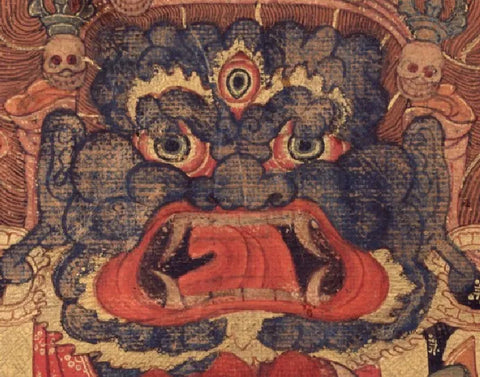
The black-robed Great Black Heaven's face is known as the "cloud-rolling face" (སྤྲིན་ཞལ་ཅན་).
This image was depicted by the Second Karmapa (1204-1283).
Meaning: "manifesting from the clouds without a physical body."
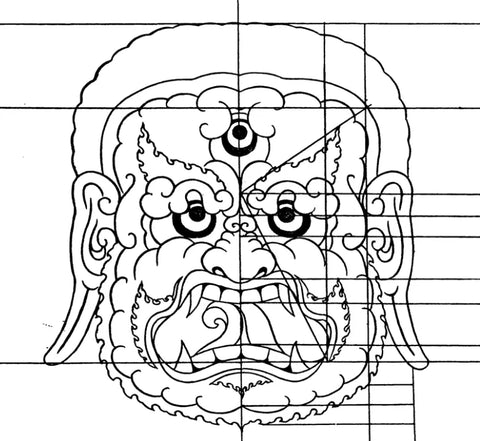
Drawing of Cloud-like Face
From GeGa LaMa's "Principles of Tibetan Art," 1983
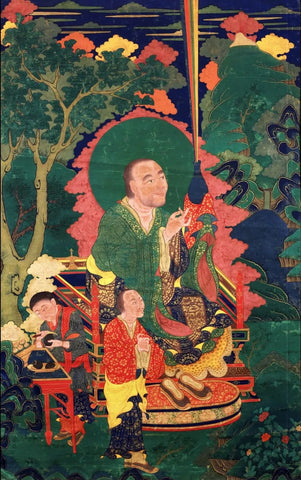
《Vajrasattva》,16th century, Rubin Museum of Art, New York
Vajrasattva(ནགས་གནས་)
Surrounded by multicolored clouds of the land of the Han

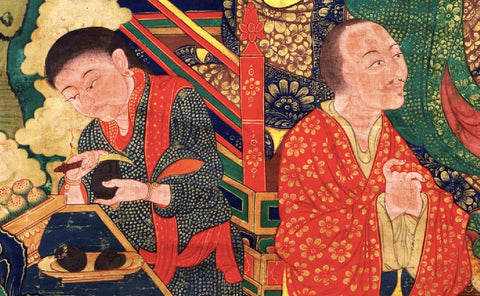
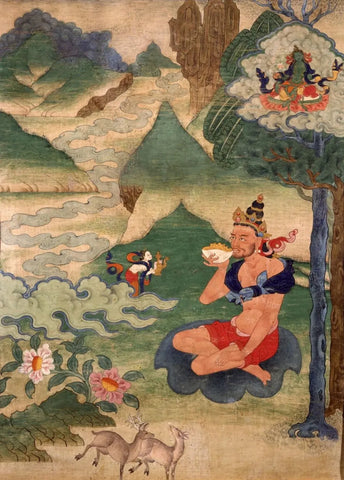
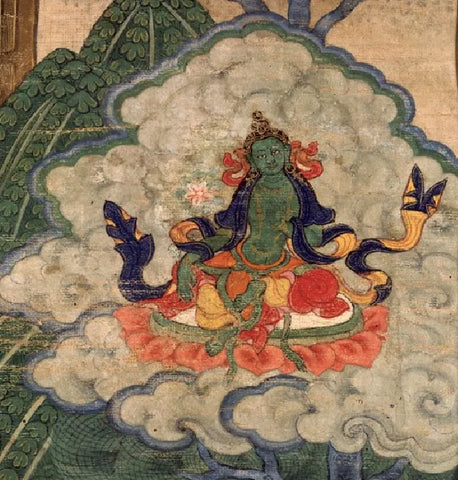
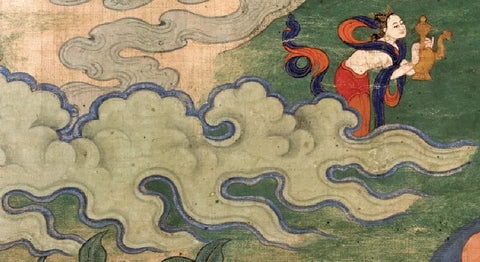
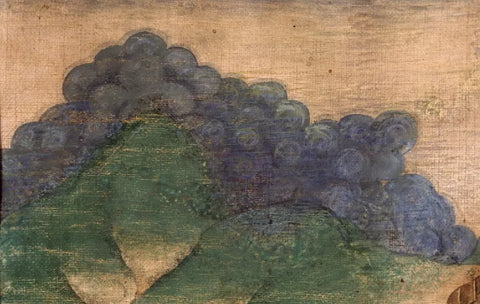
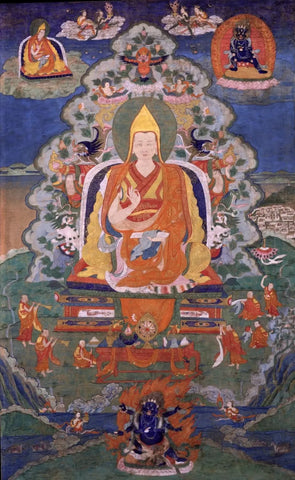
This painting is part of the "Panchen Lama lineage" series
The lineage includes not only the successive Panchen Lamas
but also some individuals believed to be the previous incarnations of the Panchen Lama
such as the King of Shambhala.

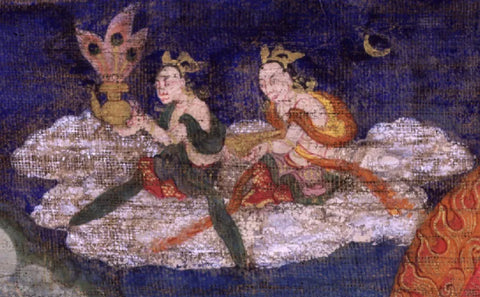
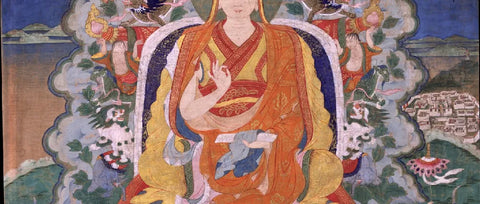
The second part of the screen
Is composed of clouds
A symbol of the earthly realm
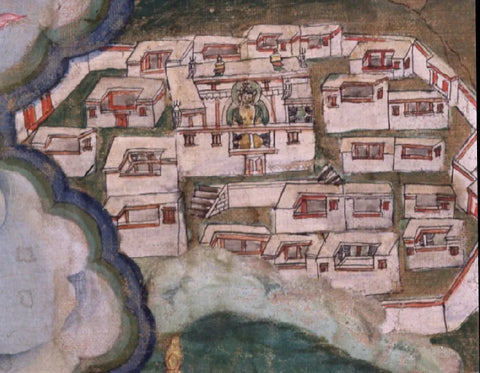

is composed of cloud mountains and flowing clouds
It is the hidden realm where the protectors reside.
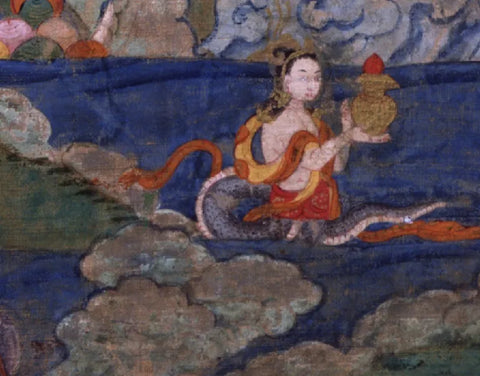
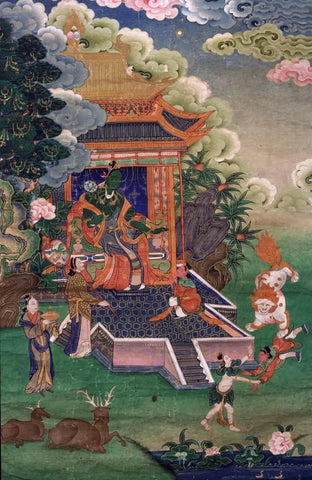
This painting is part of a series of "Rescuing the Eight Difficulty Mothers" and is considered a classic in Tibetan art history.
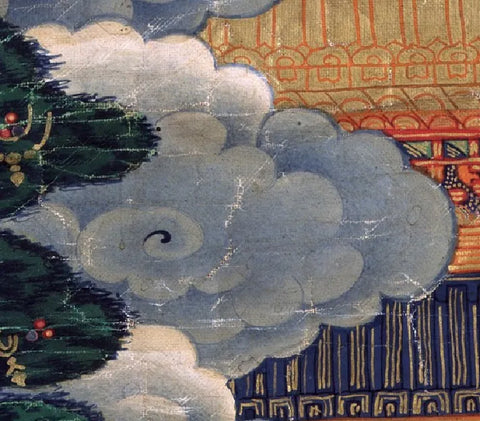
Commonly used for embellishing close-up spaces
Sculpture works also often use this style.
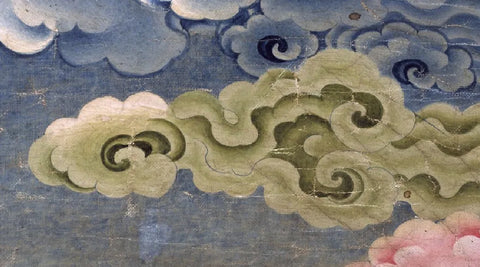
Commonly used for drawing clouds in the void
Referred to by art historian David Jackson as "dazzling magical clouds"

